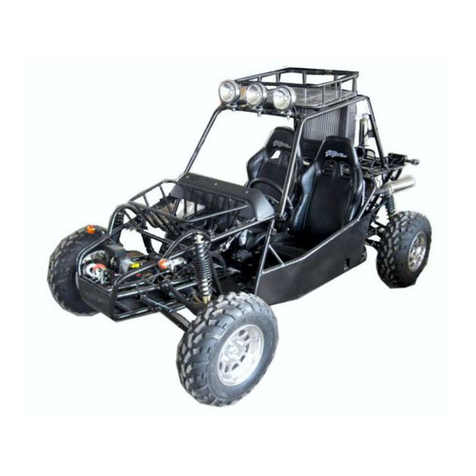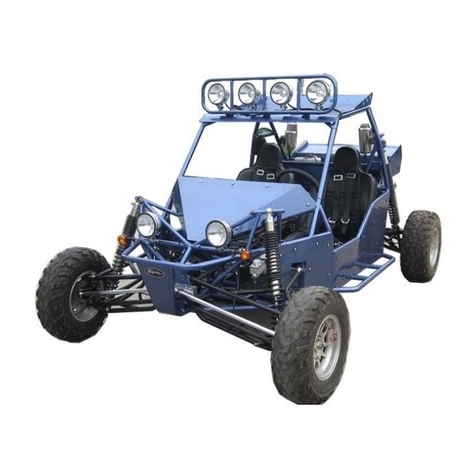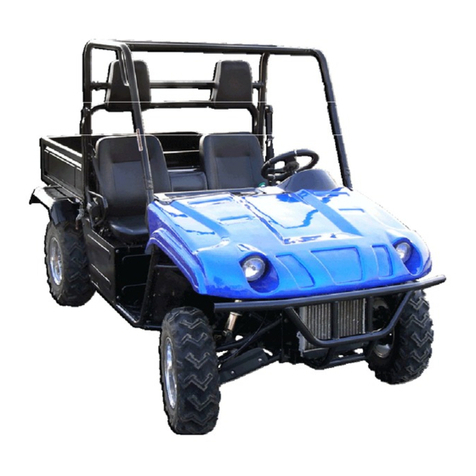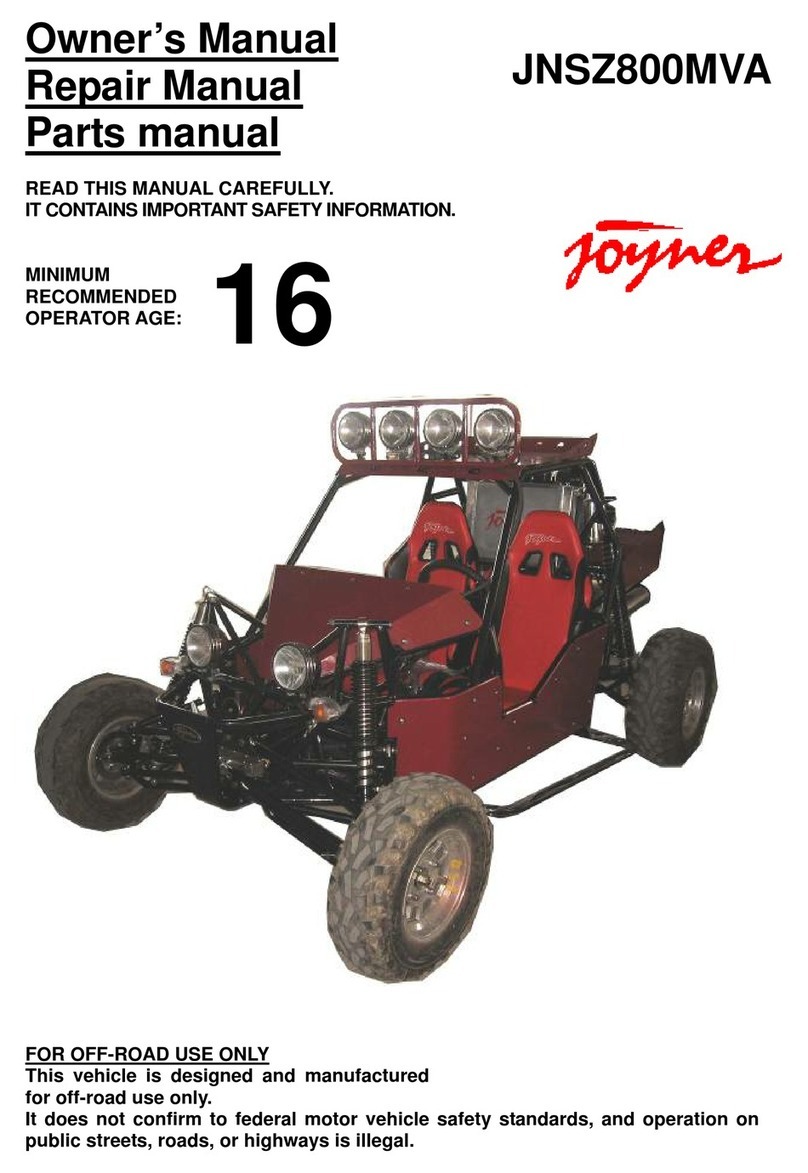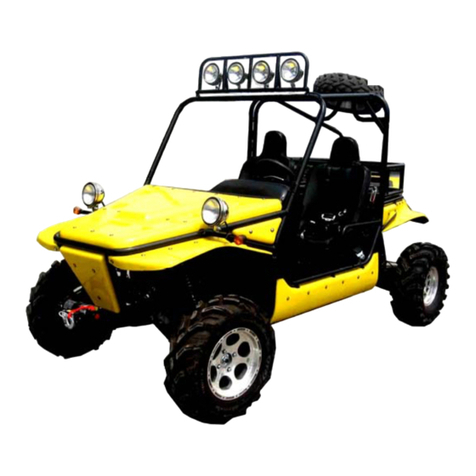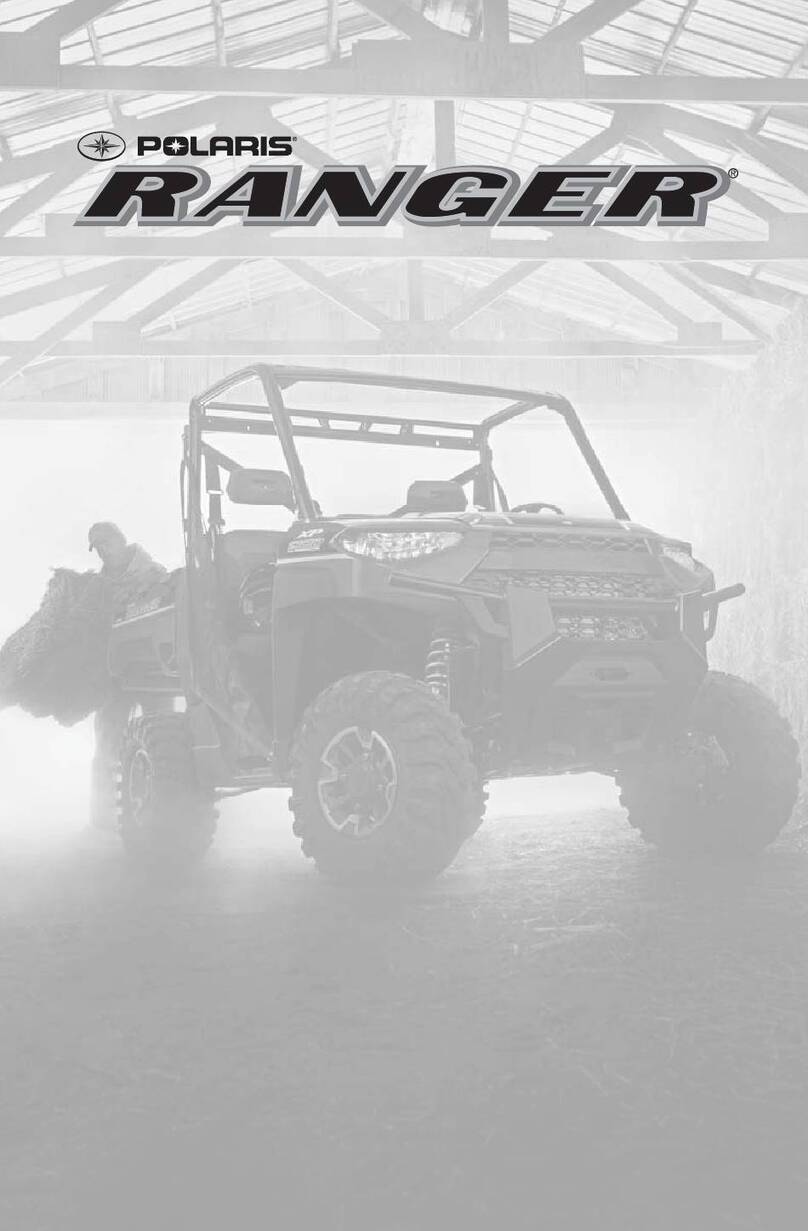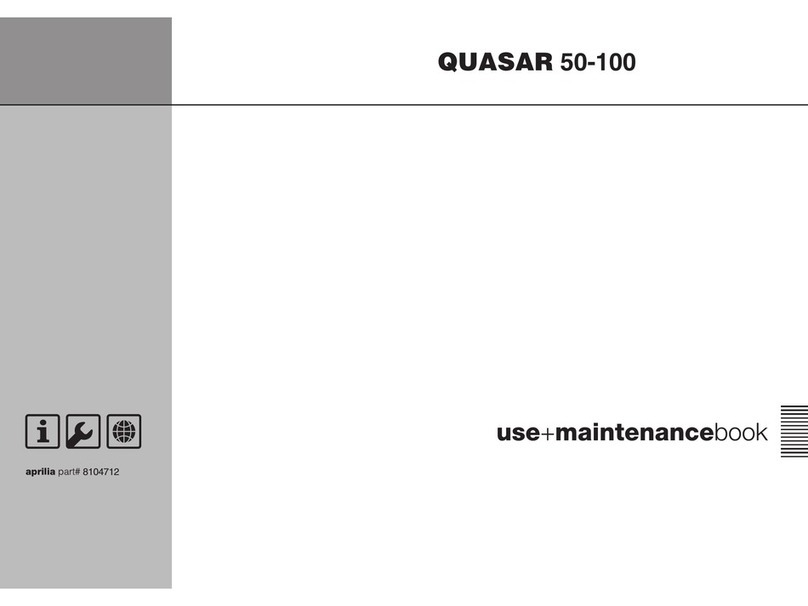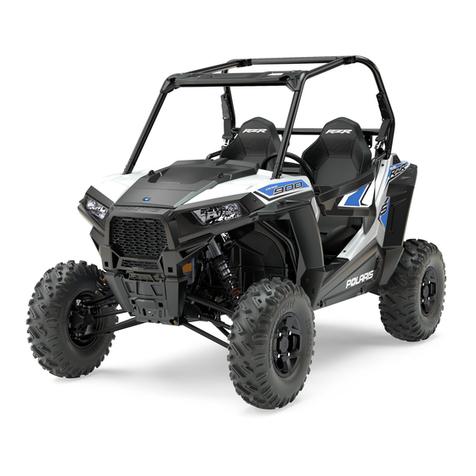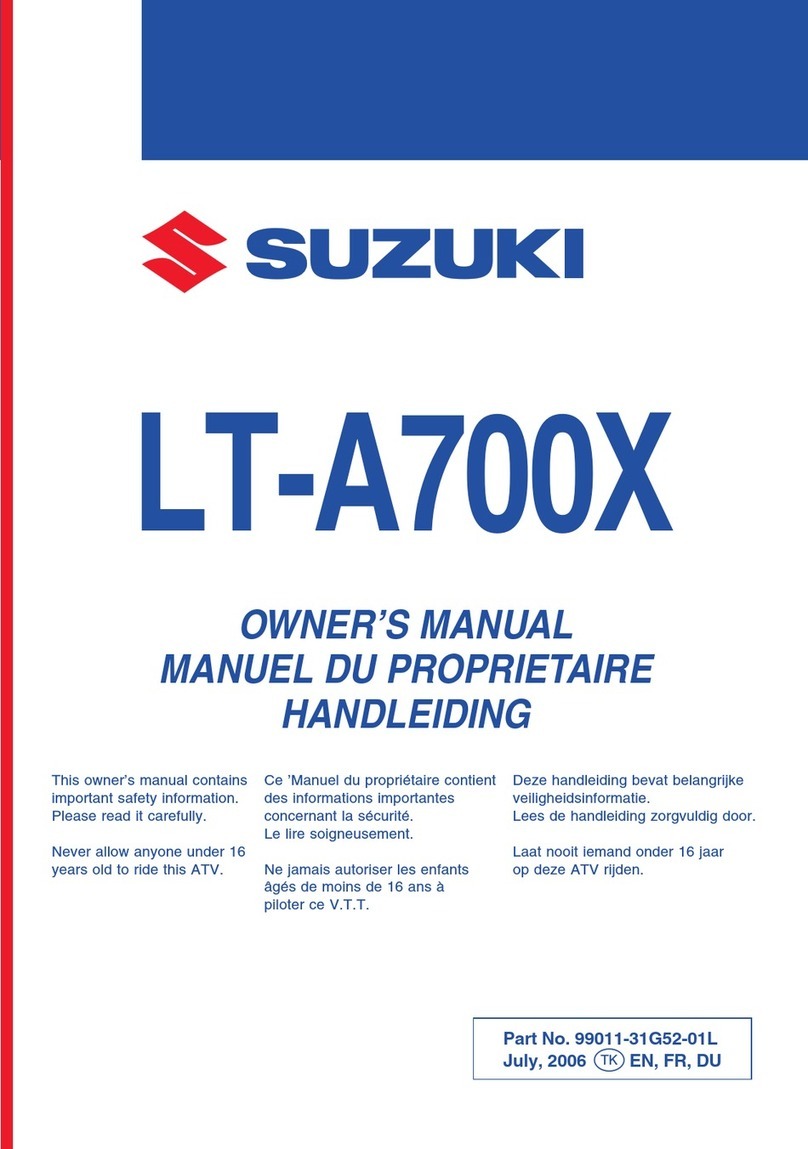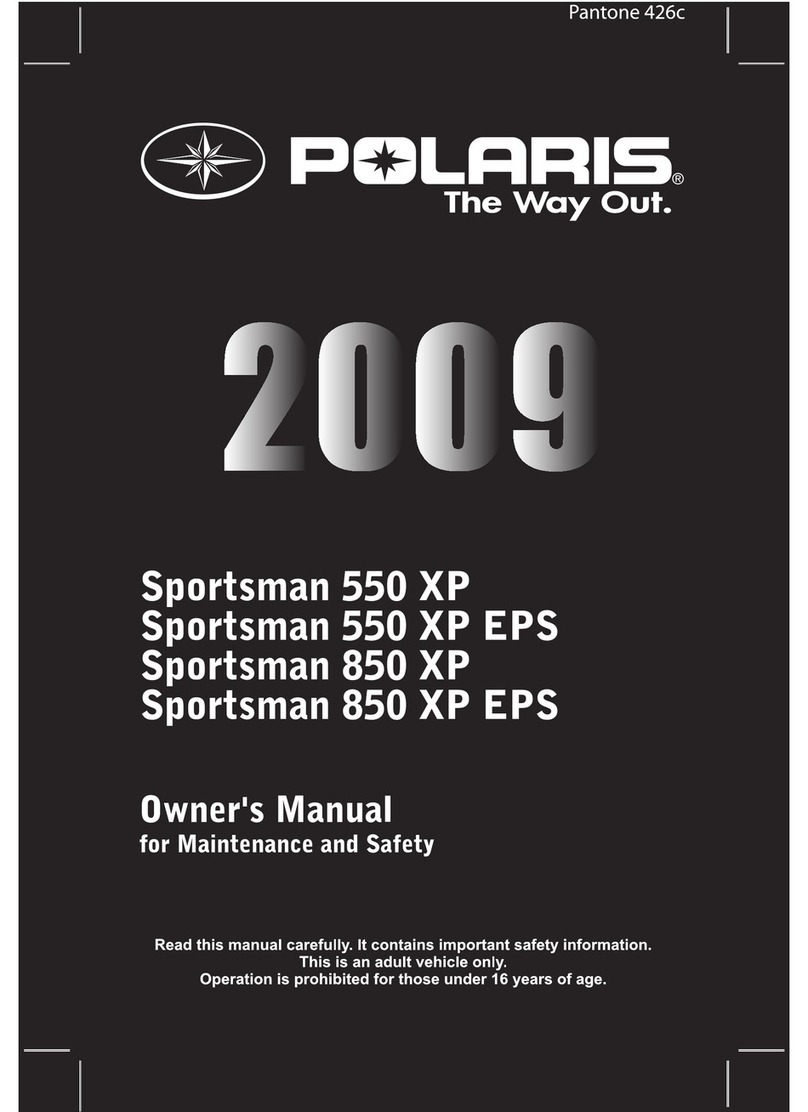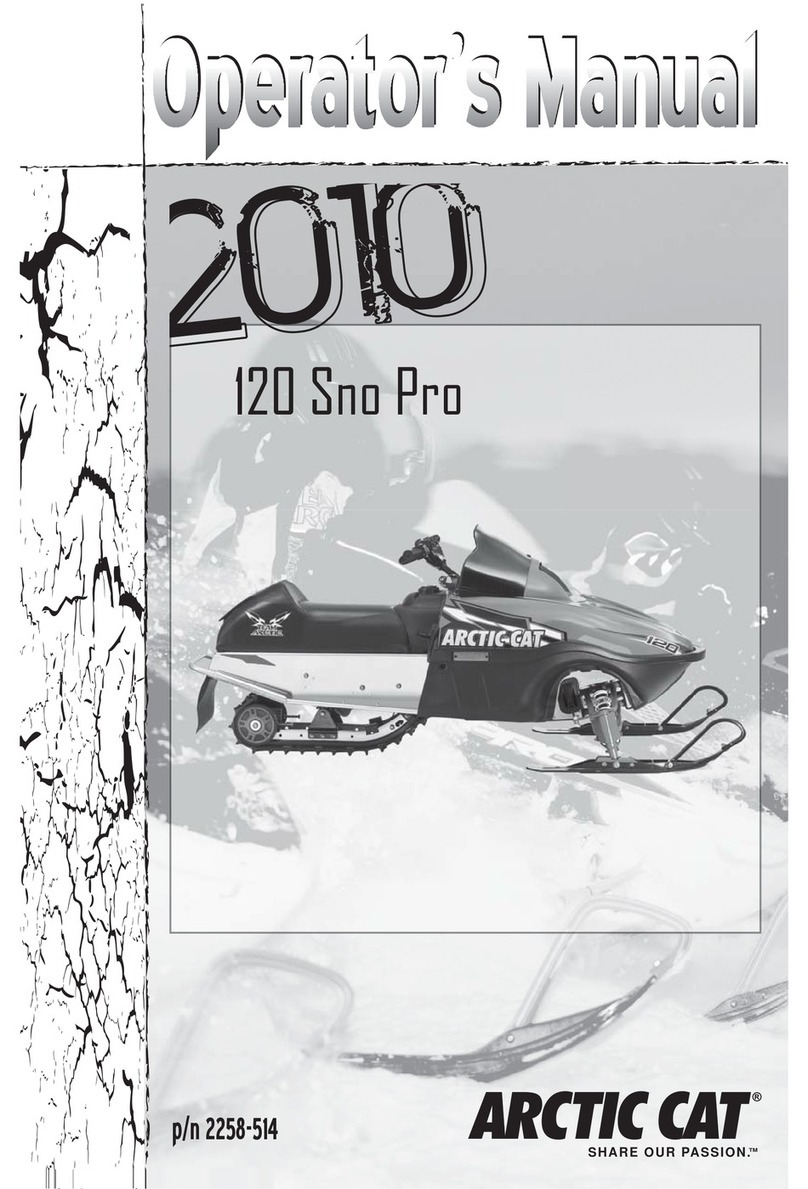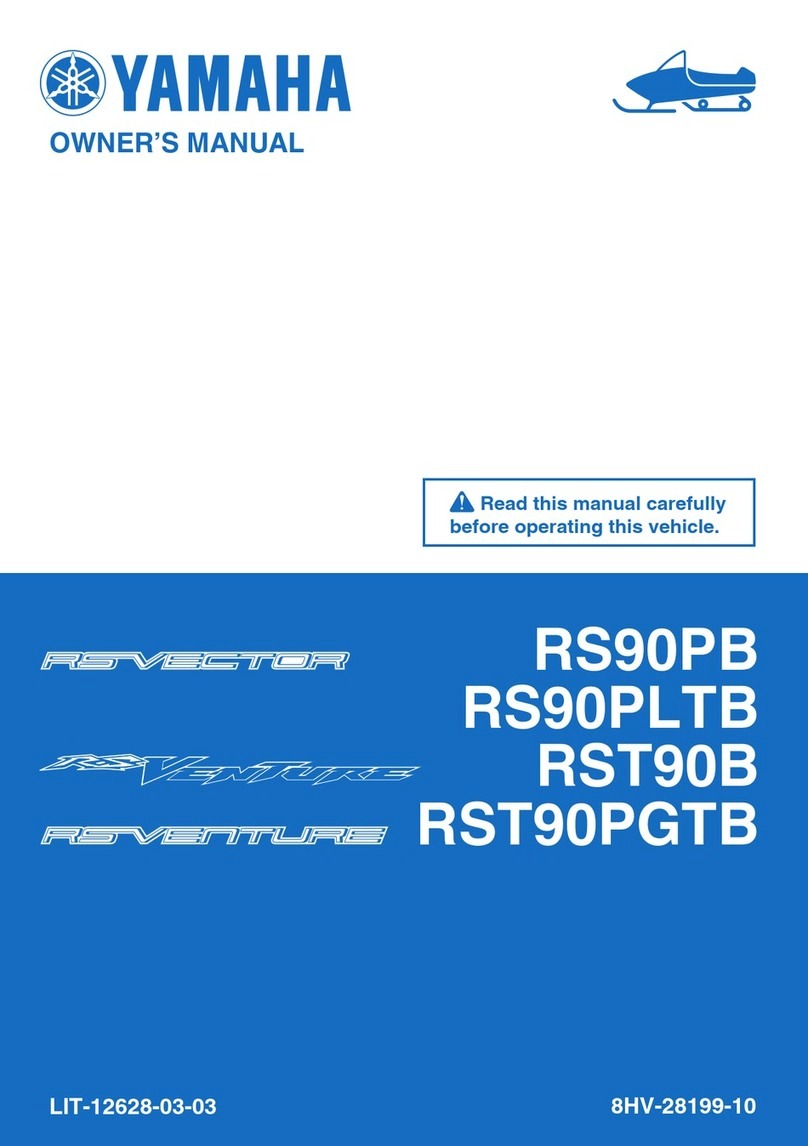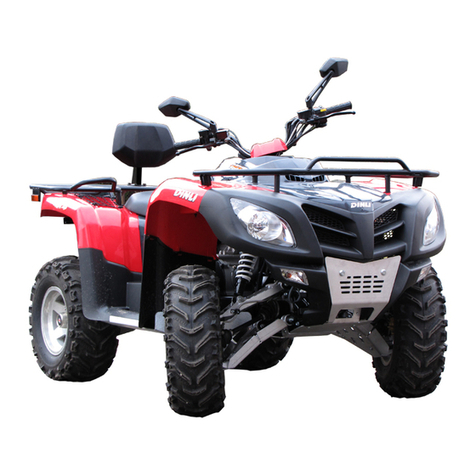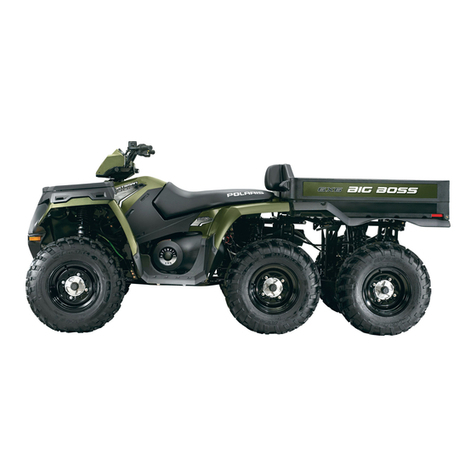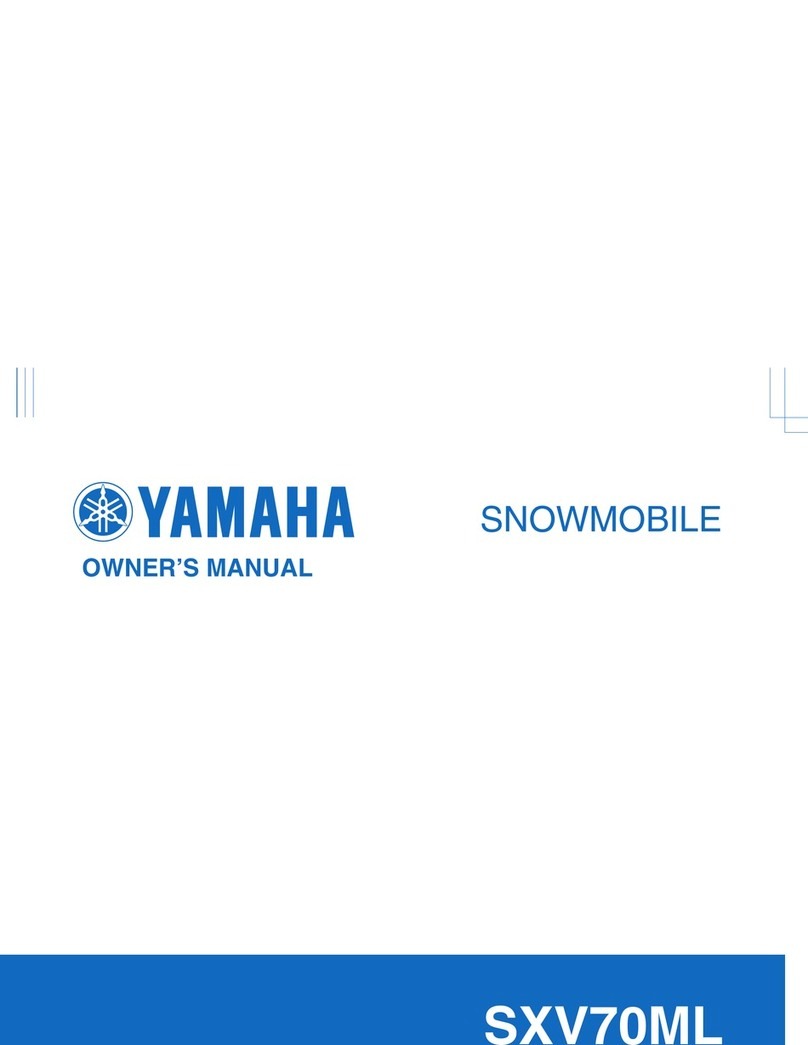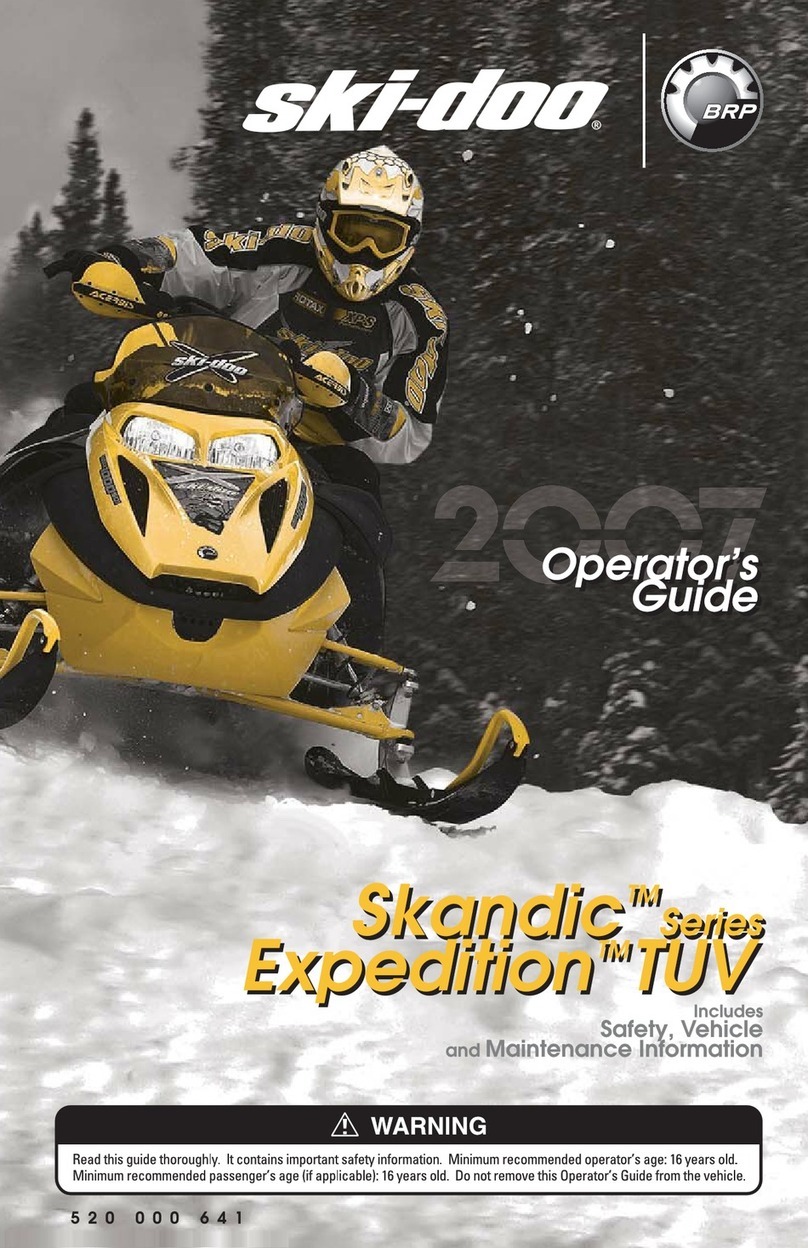9
5.ARE YOU READY TO DRIVE?
Before each drive, you need to make sure you and your Go-Kart are both ready to drive.
To help get you prepared, this section discusses how to evaluate your driving readiness,
what items you should check on your Go-Kart, and adjustments to make for your comfort,
convenience, or safety.
Before you drive your Go-Kart for the first time, we urge you to:
yRead this owner’s manual and the labels on your Go-Kart carefully.
yMake sure you understand all the safety messages.
yKnow how to operate all the controls.
yHave adult present if under 16 years old.
Before each drive, be sure:
yYou feel well and are in good physical and mental condition.
yYou are wearing an approved motorcycle helmet (with chin strap tightened securely),
eye protection, and other protective clothing.
yYou don’t have any alcohol or drugs in your system.
Protective Apparel
For your safety, we strongly recommend that you always wear an approved motorcycle
helmet, eye protection, boots, gloves, long pants, and long-sleeved shirt or jacket whenever
you drive.
Although complete protection is not possible, wearing proper wear can reduce the
chance of injury when you drive.
The following suggestions will help you choose the proper driving wear.
yHelmets and Eyes Protection
Your helmet is your most important piece of driving gear because it offers the best
protection against head injuries. A helmet should fit your head comfortably and securely.
yAn open-face helmet offers some protection, but a full-face helmet offers more.
Regardless of the style, look for a DOT (Department of Transportation) sticker in any
helmet you buy. Always wear a face shield or goggles to protect your eyes and help your
vision.
Operating this Go-Kart without wearing an approved motorcycle helmet, eye protection,
and protective clothing could increase your chances of head and/or eye injury, possibly
death in the event of severe accident.
Always wear approved motorcycle helmet that fits properly and wear eye protection
(goggles or face shield), gloves, boots, long-sleeved shirt or jacket and long pants.
yAdditional Driving Wear
In addition to a helmet and eye protection, we also recommend:
1. Sturdy off-road motorcycle boots to help protect your feet, ankles, and lower legs
Off-road motorcycle gloves to help protect your hands.
2. Driving pants with knee and hip pads, a driving jersey with padded elbows, and a
chest/shoulder protector.
